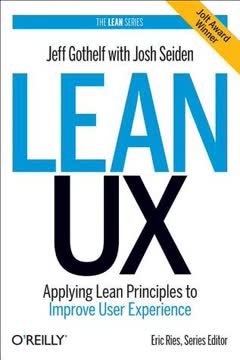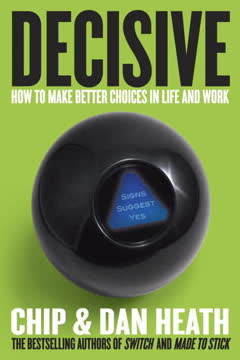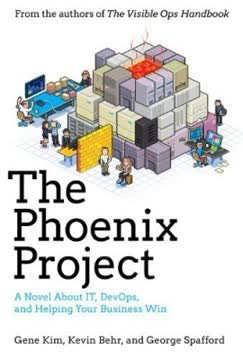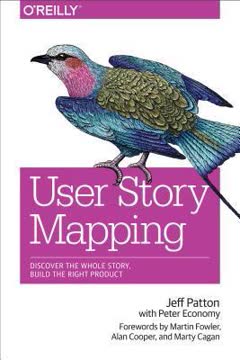Key Takeaways
1. Product management is a connective role focused on delivering user value
Product management in practice often feels like a hundred simultaneous games of checkers.
CORE skills. Product managers need four key skills: Communication, Organization, Research, and Execution (CORE). These skills enable PMs to connect different roles and perspectives within an organization. The job involves facilitating collaboration, not necessarily having all the answers or technical expertise.
Connective responsibilities. A PM's primary duty is to align user needs with business goals and technical feasibility. This requires constant translation between stakeholders, balancing competing priorities, and making tough trade-offs. PMs must be comfortable with ambiguity and willing to do whatever it takes to move the product forward, even if it means stepping outside their formal job description.
Value delivery focus. Ultimately, a PM's success is measured by the value delivered to users and the business. This means staying laser-focused on user needs, even when organizational politics or shiny new technologies threaten to distract from that core purpose.
2. Cultivate a growth mindset and genuine curiosity about users and colleagues
Take a genuine interest in the work that they do.
Embrace learning. Product managers must be willing to admit what they don't know and actively seek out new knowledge. This applies to both technical concepts and understanding the perspectives of colleagues in different roles. Approaching interactions with genuine curiosity builds trust and opens up new avenues for collaboration.
Challenge assumptions. PMs should constantly question their own assumptions about users and the product. This means:
- Conducting regular user research
- Seeking out conflicting opinions
- Being open to pivoting when new information emerges
Foster team curiosity. Great PMs spread curiosity throughout their organization by:
- Modeling inquisitive behavior
- Creating opportunities for cross-functional learning
- Celebrating when team members challenge the status quo
3. Prioritize clear communication and overcommunication in all interactions
Clarity over comfort.
Err on the side of overcommunication. It's better to risk being repetitive than to leave room for misunderstanding. This applies to:
- Documenting decisions and rationales
- Following up verbal conversations with written summaries
- Proactively addressing potential concerns
Create structured communication channels. Implement tools and processes to facilitate clear communication:
- Use templates for feature requests, bug reports, etc.
- Establish regular check-ins with key stakeholders
- Create spaces for informal communication (e.g., team lunches)
Address the uncomfortable. Don't shy away from difficult conversations or potential points of conflict. Bringing issues into the open allows for collaborative problem-solving. Use techniques like "disagree and commit" to ensure all voices are heard while still moving forward decisively.
4. Balance stakeholder management with unwavering user-centricity
Live in your user's reality.
Understand stakeholder motivations. Take the time to learn what drives different stakeholders within your organization. This allows you to:
- Frame product decisions in terms that resonate with their priorities
- Anticipate potential objections or concerns
- Find win-win solutions that satisfy multiple stakeholders
Advocate for the user. Always bring the user's perspective into discussions, especially when it might conflict with internal stakeholder desires. Use concrete user research and data to support your arguments.
Align user needs with business goals. Look for ways to demonstrate how meeting user needs directly contributes to key business metrics. This creates a compelling narrative that can unite stakeholders around a shared vision.
5. Use data to inform decisions, not to abdicate responsibility
If you don't take the time to fully understand why this feature is being requested, you are in no position to promise anything.
Question the data. Always dig deeper into the context and methodology behind any metrics or research presented. Key questions to ask:
- What assumptions are built into this data?
- What are the limitations of how it was collected?
- What alternative explanations might exist for the patterns we're seeing?
Combine quantitative and qualitative insights. Numbers alone rarely tell the full story. Supplement quantitative data with:
- User interviews and observation
- Customer support interactions
- Competitive analysis
Take responsibility for interpretation. Data doesn't make decisions; people do. As a PM, your job is to synthesize multiple data points, consider business context, and make a clear recommendation. Be prepared to defend your reasoning, not just point to a chart.
6. Create flexible roadmaps and prioritize based on clear organizational goals
Your organization needs to have an explicit and shared understanding of what a roadmap means and how it is to be used.
Establish roadmap expectations. Clearly define:
- How far into the future the roadmap extends
- How often it will be updated
- Who has access and input
- The level of commitment represented by items on the roadmap
Tie prioritization to goals. Before diving into feature debates, ensure there's alignment on high-level objectives. Use frameworks like OKRs (Objectives and Key Results) to create a shared language for discussing priorities.
Build in flexibility. Leave room in your roadmap and sprint planning for:
- Addressing emergent user needs
- Experimenting with new ideas
- Tackling technical debt
Involve the team in prioritization. Use collaborative exercises like impact/effort mapping to give the entire team ownership over prioritization decisions. This builds buy-in and surfaces important context that might otherwise be missed.
7. Implement Agile practices thoughtfully, always tying back to core values
Changing specific practices within an organization, I've found it very helpful to document the change being made, the goal of that change, and how we will know when it is succeeding.
Start with values, not processes. Before implementing any specific Agile practices, ensure the team understands and buys into the core Agile values:
- Individuals and interactions over processes and tools
- Working software over comprehensive documentation
- Customer collaboration over contract negotiation
- Responding to change over following a plan
Adapt to your context. Don't blindly follow Agile "best practices." Instead:
- Start with an off-the-shelf methodology (e.g., Scrum)
- Regularly evaluate which elements are working for your team
- Be willing to modify or abandon practices that aren't serving your goals
Measure the impact. For any Agile practice you implement, clearly define:
- The intended goal of the practice
- How you'll measure its success
- A timeline for re-evaluating its effectiveness
8. Navigate organizational challenges by focusing on what you can control
Make a list of the things outside of your control.
Identify your sphere of influence. In times of organizational turmoil, clearly delineate:
- What you can directly control
- What you can influence
- What is entirely outside your control
Delegate meaningfully. Avoid the trap of trying to shield your team from all organizational dysfunction. Instead:
- Involve team members in addressing challenges
- Give them ownership over important initiatives
- Use difficulties as opportunities for growth and learning
Protect team rituals. During stressful periods, it's tempting to cancel "non-essential" team activities. However, maintaining routines like team lunches or brainstorming sessions is crucial for:
- Preserving team cohesion
- Providing a sense of normalcy
- Creating space for informal communication and problem-solving
Model resilience. Your attitude as a PM sets the tone for the team. Demonstrate:
- A willingness to tackle difficult problems head-on
- The ability to maintain perspective in the face of setbacks
- A commitment to continuous learning and improvement
Last updated:
FAQ
What's "Product Management in Practice" about?
- Real-world guide: "Product Management in Practice" by Matt LeMay is a practical guide that explores the day-to-day responsibilities of a product manager.
- Connective role: It emphasizes the connective role of product management, bridging user needs with business goals and technical viability.
- Case studies and frameworks: The book includes case studies and frameworks to help new and experienced product managers navigate their roles effectively.
- Focus on relationships: It highlights the importance of building great relationships as a foundation for building great products.
Why should I read "Product Management in Practice"?
- Practical insights: The book offers actionable insights and advice for both aspiring and experienced product managers.
- Beyond theory: It goes beyond theoretical concepts to address the real-world challenges and nuances of product management.
- Empathy and collaboration: Emphasizes core values like empathy, curiosity, and collaboration, which are crucial for success in product management.
- Real-world stories: Includes stories from working product managers, providing relatable and practical examples.
What are the key takeaways of "Product Management in Practice"?
- CORE skills: Focus on Communication, Organization, Research, and Execution as the key skills for product managers.
- Clarity over comfort: Prioritize clarity in communication, even when it's uncomfortable, to avoid misunderstandings.
- Change the rules: Adapt processes to fit the team's needs rather than rigidly following established rules.
- User-centric approach: Always align product decisions with user needs and business goals.
What are the best quotes from "Product Management in Practice" and what do they mean?
- "Clarity over comfort": This quote emphasizes the importance of clear communication, even when it might be uncomfortable, to ensure alignment and avoid misunderstandings.
- "Change the rules, don’t break the rules": Encourages adapting processes to better fit the team's needs rather than blindly following established practices.
- "Live in your user’s reality": Highlights the importance of understanding and prioritizing user needs in product management decisions.
- "No work beneath, no work above": Suggests that product managers should be willing to take on any task necessary to support their team and product.
How does Matt LeMay define the role of a product manager in "Product Management in Practice"?
- Connective role: A product manager connects user needs with business goals, technical viability with user experience, and vision with execution.
- Varied responsibilities: The role involves a wide range of tasks, from strategic planning to day-to-day execution.
- Influence without authority: Product managers often have responsibility without direct authority, requiring them to lead through influence.
- Focus on relationships: Building strong relationships is crucial for successful product management.
What is the CORE skill model in "Product Management in Practice"?
- Communication: Effective communication between stakeholders, users, and team members is essential.
- Organization: Organizing the team for successful collaboration and ensuring everyone knows their priorities.
- Research: Continuously seeking new ideas and perspectives to inform product decisions.
- Execution: Ensuring that tasks are completed efficiently and effectively, with a willingness to take on any necessary work.
How does "Product Management in Practice" address the challenges of working with senior stakeholders?
- Managing up for clarity: Push for clarity in company strategy and vision, as a lack of clarity can hinder success.
- Empower decision-making: Help senior stakeholders make informed decisions by providing clear information and options.
- Avoid surprises: Ensure that senior stakeholders are not surprised by new ideas in important meetings by socializing them in advance.
- User-centric focus: Keep user needs at the forefront of discussions with senior stakeholders to align business goals with user value.
What advice does Matt LeMay give for communicating with users in "Product Management in Practice"?
- Play dumb: Create space for users to communicate their reality by not assuming you know everything.
- Ask about specifics: Focus on specific instances rather than generalizations to get more accurate insights.
- Avoid leading questions: Don’t ask users to design the product for you; instead, understand their needs and design solutions accordingly.
- Level up questions: Use questions that help uncover core goals and motivations without making users defensive.
How does "Product Management in Practice" suggest handling data-driven decision-making?
- Avoid the "D" word: Be specific about the data you’re using and the assumptions you’re making.
- Document assumptions: Clearly document assumptions to allow for informed discussions and testing.
- Focus on key metrics: Identify and focus on the metrics that truly matter for your product and business goals.
- Qualitative and quantitative: Supplement quantitative data with qualitative insights to understand the "why" behind the numbers.
What is the approach to roadmaps and prioritization in "Product Management in Practice"?
- Strategic communication tool: Treat roadmaps as a tool for strategic communication, not a fixed plan.
- Facilitate collaboration: Use roadmaps to encourage collaboration and alignment around high-level goals.
- Structured idea evaluation: Provide templates to structure and evaluate ideas for the roadmap based on user needs and business goals.
- Prioritize against goals: Ensure that prioritization decisions are guided by clear and actionable organizational goals.
How does "Product Management in Practice" view Agile methodologies?
- Values over processes: Emphasizes the core values of Agile, such as collaboration and responding to change, over rigid processes.
- Reflect and improve: Encourage regular reflection and improvement of Agile practices to ensure they meet team goals.
- Adaptation: Be willing to adapt Agile practices to fit the specific needs of the team and organization.
- Beyond software: Agile principles can be applied beyond software development to improve collaboration and efficiency across the organization.
What are the common pitfalls for product managers according to "Product Management in Practice"?
- Insecurity-driven behaviors: Avoid falling into archetypes like the Jargon Jockey or Product Martyr, which are often driven by insecurity.
- Over-reliance on best practices: Don’t blindly follow best practices without considering the unique needs of your organization.
- Avoiding user interaction: Ensure that user-centric rituals don’t replace actual user interaction and feedback.
- Neglecting team dynamics: Pay attention to team dynamics and ensure that processes and communication styles are adapted to fit the team’s needs.
Review Summary
Product Management in Practice receives high praise for its practical, real-world approach to product management. Readers appreciate its focus on communication, soft skills, and dealing with ambiguity. The book offers valuable insights for both new and experienced product managers, with many highlighting its down-to-earth style and relatable scenarios. Reviewers consistently mention the book's emphasis on clarity, stakeholder management, and adaptability. Many consider it a must-read for aspiring product managers, noting its effectiveness in demystifying the role and providing actionable advice for common challenges.
Similar Books










Download PDF
Download EPUB
.epub digital book format is ideal for reading ebooks on phones, tablets, and e-readers.




